Grazing Wyoming Big Sagebrush In Fall Increases Plant Diversity
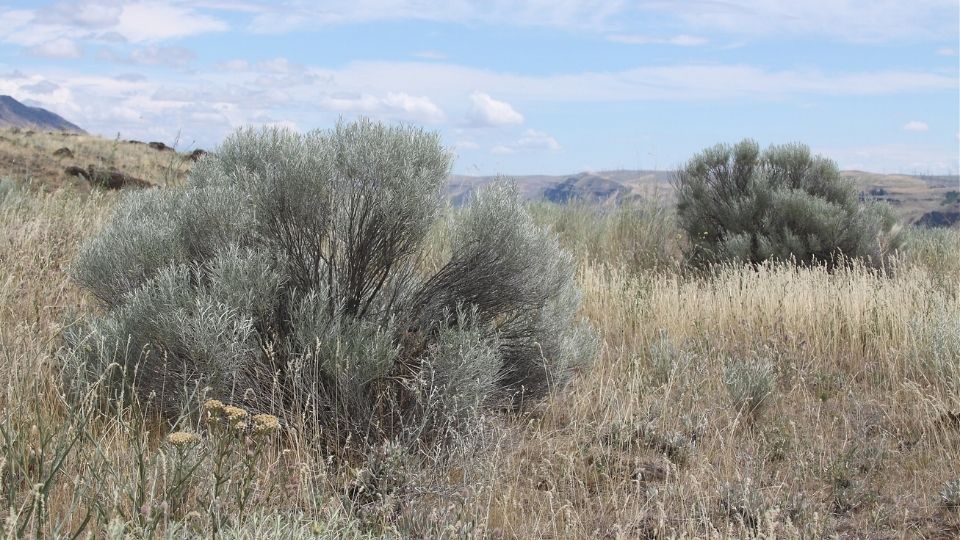
Project Participants: Fred Provenza, Rick Danvir, Juan Villalba, Tyler Staggs, Ryan Woodland, and Neil West
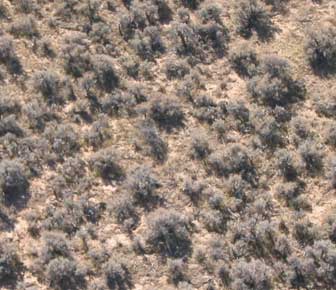 Summary: Supplementing sheep in the fall under high-intensity grazing reduced abundance of sagebrush and increased grasses, forbs and number of plant species.
Summary: Supplementing sheep in the fall under high-intensity grazing reduced abundance of sagebrush and increased grasses, forbs and number of plant species.
Introduction: Many areas in the Western United States are dominated by sagebrush. The increase in sagebrush density over the past century is generally attributed to: 1) reduced numbers of mixed feeders and browsers such as deer, antelope, goats and sheep, 2) increased numbers of cattle and elk, 3) repeatedly grazing the same grasses and forbs, particularly during spring, and 4) fire suppression.
Though the decline in diversity is due in part to grazing, grazing may in fact be the answer to improving plant diversity and wildlife habitat in sagebrush-steppe ecosystems. Grazing by sheep and cattle during the fall, when grasses and forbs are dormant, can increase diversity by reducing sagebrush’s competitive advantage. Supplemental nutrients can improve the effectiveness of fall grazing because sheep and goats supplemented with energy and protein eat nearly twice as much sagebrush as unsupplemented animals. The energy and protein supplements provide enable sheep to better detoxify the toxins found in sagebrush. Thus, intake of sagebrush may be increased if large numbers of supplemented sheep graze sagebrush for a few days in the fall.
Methods: The study was conducted at Deseret Land and Livestock in Rich County, UT. The plots were.62 acres and contained dense stands of Wyoming big sagebrush (photo above right). In the 2001, the first year of the study, plots were grazed by mature ewes either receiving a lb/d of supplement or no supplement. Sheep grazed the plots for 15 days. Stocking rate on the plots was 500 sheep-days/acre and stock density was 32 sheep/acre. The sagebrush received about 25% use. Researchers determined they needed more use on the sagebrush to change vegetation composition. In 2003, they grazed the plots with sheep again. This time the sheep grazed the plots for 6 days, they received 1.9 lbs/d of supplement, stock density was double to 64 sheep/acre, and stocking rate was 390 sheep-days/acre. This time sagebrush received 98% use (photo below right). In year 1, of the study sheep were allowed to choose their own supplement early in the trial. The supplement was pelleted and contained: 5% soybean meal, 45% alfalfa, 20% beet pulp, 30% corn.
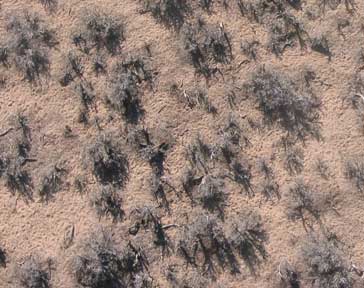 Results: Results from the plant composition data revealed that supplementation and high-density, short-duration fall grazing increased diversity in plant communities dominated by sagebrush. They found grazing reduced dense stands of sagebrush by 66% while increasing the amount of grass 43%, forbs 60%, and other shrubs 14%. Finally, the number of species growing in the grazed plots increased by 42%.
Results: Results from the plant composition data revealed that supplementation and high-density, short-duration fall grazing increased diversity in plant communities dominated by sagebrush. They found grazing reduced dense stands of sagebrush by 66% while increasing the amount of grass 43%, forbs 60%, and other shrubs 14%. Finally, the number of species growing in the grazed plots increased by 42%.
Scroll down to see additional photos of the study below.
For more information contact:
Beth Burritt
Area Rangeland Extension Agent
Dept. Wildand Resources
Utah State University
Logan, UT 84322-5230
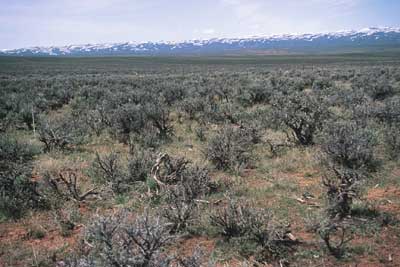
Grazed plot in Spring of 2004.

Example of a grazed sagebrush plant at the end of the 6 day trial.
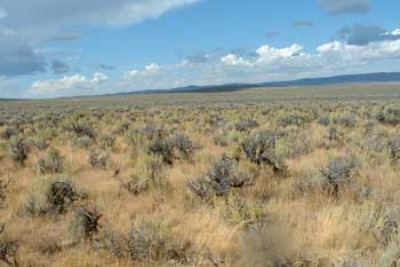
Grazed plot in Fall 2004 (photo left).

